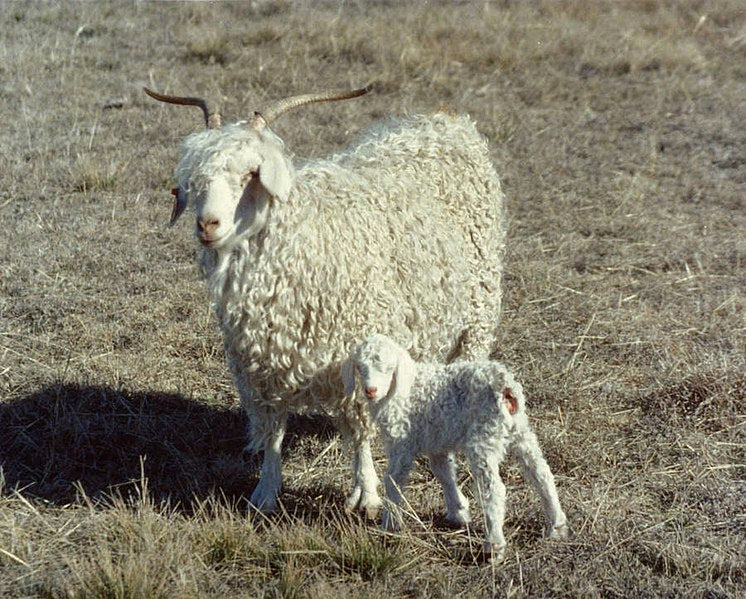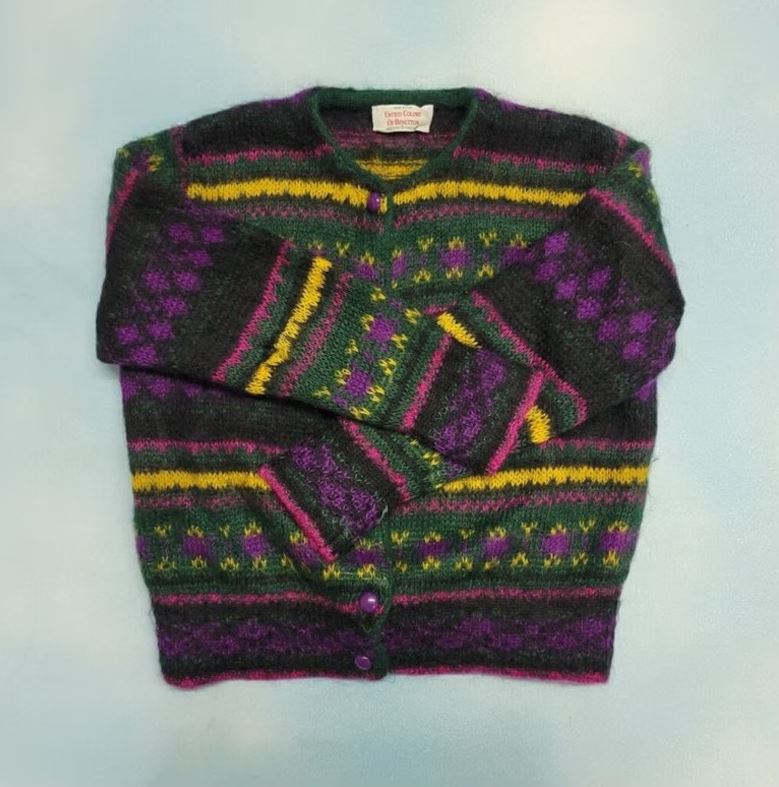What Is Mohair?
Mohair yarn, which is spun from the fiber produced by the Angora goat (not to be confused with angora fiber, which is from an Angora rabbit), has a lustrous sheen, softness, and strength. I’m here to sing the praises of mohair, my all-time favorite fiber. You may have seen that we recently took to social media to proclaim that Andorra, our wool and mohair blend yarn, was our favorite yarn of the Kelbourne bunch. Surprised? Well, I am here to tell you why! There are wool qualities ranging from super soft merino to very coarse rug wools, and the same is true for mohair. As Angora goats age, the fiber they produce becomes thicker and coarser. The finest super kid mohair is incredibly soft and lustrous, but is also quite expensive. Adult mohair that is a fine enough quality for handknitting yarns and commercial sweaters is still soft and luxurious, but it is not as airily light and downy-soft as kid mohair.
Mohair Needs Better PR
My assumption (based on years of knitters telling me exactly what they think of mohair) is that the same people who complain about wool being "too scratchy" also complain about mohair. In our last 20 years of working in yarn shops and running Kelbourne Woolens, we have witnessed the gamut of opinions and wants from customers. Initially, soft soft soft was the utmost quality people looked for in a yarn. As lovers of a rustic wool, we appreciated why people wanted softness, but knew that, in time, knitters would come around to different wool types and qualities - and we were right! As mohair is not nearly as ubiquitous as wool, it has taken more time for newer crafters to understand and appreciate the many wonderful qualities of mohair, which we find abundant. New knitters are catching on, and it makes sense that once less-soft wool made a comeback, mohair would be hot on its heels. Mohair has gained in popularity in the past couple of years, and we are HERE FOR IT!
Mohair Through Time
My vintage pattern collection begins with some really bulky looking sweaters from the 1960s. I can imagine what it would be like to have a well-intentioned grandmother knit me one of these trendy sweaters and maybe not enjoying wearing it as much as she hoped. While the mohair was big, the designs were relatively refined. The brushed mohair texture, coupled with big cables and oversized collars, was about as wild as they got. As we moved into the 80s, things started to get really unhinged - and I do believe that this is when a lot knitters were scarred for life. While I don't want to recreate any of these personally, I love them for their outlandishness. Please do yourself a favor and google "1980s mohair sweater" for the full effect. It's a wild ride! This era had some truly innovative designers, like Patricia Roberts, Ellen Tracy, and Kaffe Fassett, who took mohair to the limit.By the 90s the mohair craze was still going on, but it tamed somewhat. These are the kinds of sweaters I remember as a kid, and I desperately wanted this mohair cardigan from Benneton.

The 90s were when the truly outlandish mohair phase of the 80s designers with bobbles, sparkles, and country landscapes calmed down and we started getting some more refined garments. It is also when I started knitting. I have a few mohair sweaters in the closet (and a few unfinished, of course) and they are a bit dated for sure! The multicolored Collinette pullover I still love, but no longer fits, and a soft lilac Anny Blatt cabled pullover in pieces under the guest room bed are two that come to mind. I do hope that my daughter appreciates these one day, but only time will tell. One of them was definitely inspired by the cover of Björk album, Debut, and probably deserves to be reimagined and reknit in Andorra.

This album was an iconic 90s moment for me. I actually don't know if the sweater is actually mohair, or if it is Einband laceweight Lopi. Between it and the 1994 MTV Unplugged where Nirvana frontman Kurt Cobain donned a tattered vintage mohair cardigan, the 90s were solidly a mohair-appreciating era. Gone were the wild days of the 80s, and we came full circle to the looks of 50s and 60s mohair simplicity.

Mohair remains in the cache of luxury fibers for designers and fashionistas. In the last year we've seen mohair garments from COS, Alexander Wang, Marni, Acne Studios, and many more. Mohair seems to finally be making another comeback! The vintage lover in me is really resonating with this 50s inspired mohair vest from Marni. It is not brushed, which I like, and is a wool-forward blend of 70% wool, 20% mohair, and 10% polyamid, making it a pretty close comp to our Andorra yarn, which is a blend of 60% Merino wool, 20% Highland wool, and 20% mohair. Minus the fact that I don't want to handknit this argyle check pattern, this would be a great candidate for a designer-inspired handknit!

What I love about knitting is that we, unwittingly or not, get to be connected to this long history of textiles, fashion, nature, and culture. There are reasons we like the things we like, and why some garments or fibers make us feel good, because they connect us to memories. For me, one of those feel-good things is just a little bit of mohair. For us, Andorra was designed to encapsulate those memories and qualities we loved about vintage knits. It has a femininity, subtle sheen, and soft halo. Its sport weight gauge makes it perfect for garments, and can be used at a variety of stitches per inch to create a dense knit like a sock, or a soft and airy pullover. We just love it, and we hope you do too.
Now, excuse me while I go cast on this perfect little cardigan in Andorra.

